|
continued
from page one. . .
The main reproduction print below for each pattern is 'to scale.'
One of the more pale colorways is a delicate print of tiny vines and flowers
in light pink, blue, green and beige on a light ground. This print would have
been sold for dress material as early as 1760 in England. They were popular
well into the 1800s in America.
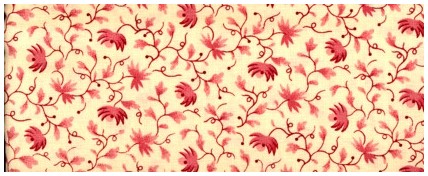

_____________________________________
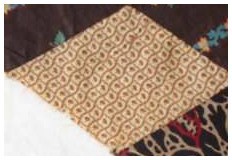
original early 19th
Century print
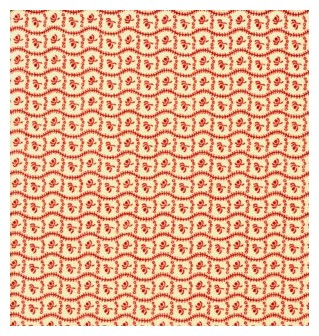
The next group of colors is slightly darker than the palest. The French
influence is seen in this mignonette print, meaning a tiny design repeated in
a consistent pattern across the fabric. This print was roller printed with
dress material in mind. The umbrella category for this type of tiny dress
print is Geometric. Neats and diaper prints are the names that may be used to
describe this print when it's not made in France. There is a beautiful
yellow-gold color in this print, a color that we just don't get enough of in
reproduction prints.
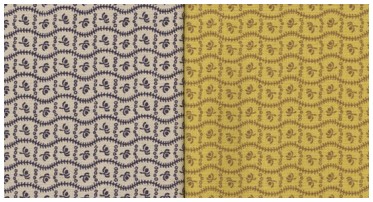
_____________________________________

original early 19th Century print

No reproduction group of 19th century fabrics would be complete with out a
plaid. This one is a on the small side made with three shades of a color and a
very light almost one shade of it for punch. This plaid can be used on quilts
made throughout the century and well into the 1940s, when plaids get very
large as the decade progresses. Civil War reproduction quilts beg for plaids
such as these.

_____________________________________
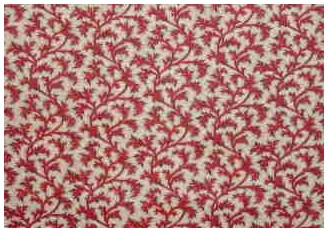
original early 19th Century print
A vine and picotage print
is the largest of the smaller dress prints. This print has the neoclassical
look that returns again and again in textile history, but was especially
popular at the turn of the 18th century and for the next couple of decades.
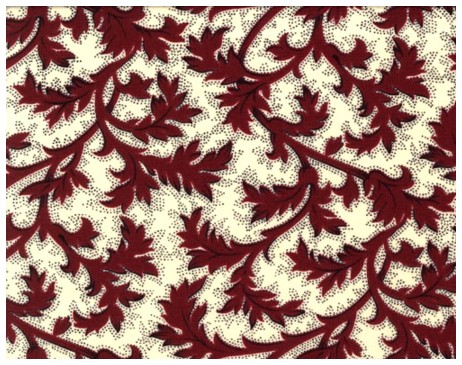
Pat Nichol's saw an advertisement for this French print in an 1811 ad. This
could have been made with blocks with metal pins or by a roller printing
machine, also called a cylinder printer in the early years following its
patent in 1783, by Thomas Bell.

_____________________________________
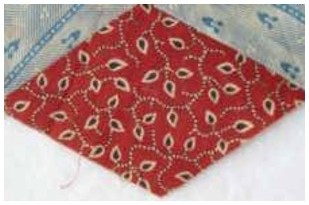
original early 19th Century print

The darkest of the dress
prints is a spotted vine with a leaf, no flowers. It could just as easily be
used in a contemporary quilt or one using ethnic fabrics. It is a versatile
and unique print. Its origins are French, dating to the first quarter of
1800s, when darker grounds were in style. This print comes in the background
colors of olive green, navy blue, brown and a dark red and the leaves are
always black.
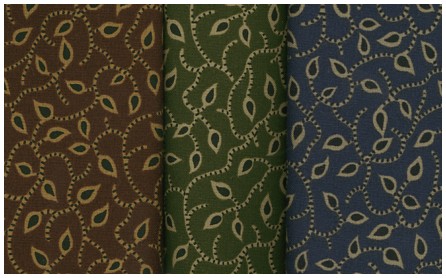
Pat designed a quilt
pattern for her fabric line which you can find on P&B's website www.pbtex.com.
A pattern is provided and it could be made by quilters in the
beginner level, but wouldn't be a first or second quilt because of all those points.
She named it Indian Meadow. It is a center medallion style quilt
(59"X59") and includes a version of the Lady of the Lake block,
which is a pre-1850 quilt block.
I would like to thank Pat
L. Nichols and P&B for providing information and fabric for this review, and
for making this sophisticated fabric collection.
|